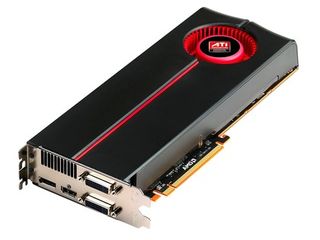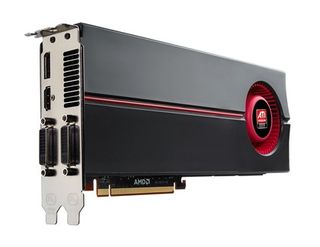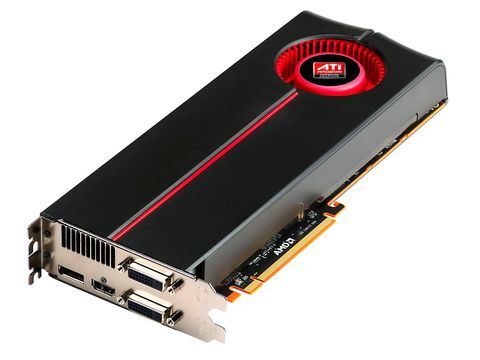Why you can trust TechRadar

But let's not get ahead of ourselves. Before we can make a full judgement of the new Radeon HD 5870's value proposition, we need to have a damn good look at what makes it tick.
In terms of broad philosophy it's unsurprisingly pretty similar to the lean and mean approach taken with the HD 4800 series. Keep each of the constituent parts small and efficient, but have a a metric tonne of them, that's is the basic idea.
Indeed, the new chip's internal structure will be familiar to anyone with a working knowledge of the old 4800 architecture. The asymmetric vec4+1 shader set up and the ratio of shader to texture and render output units, for instance, remains the same. However, there are a number of pretty hugola differences, too.
Monster internals
First up is that transition from 55nm silicon production to 40nm. It may seem of academic interest, but it allows AMD to cram in more transistors and therefore more performance and features into any given amount of silicon.
Add in the fact that AMD's latest is actually around 25 per cent larger than the RV770 chip that formed the basis of the 4800 series GPUs and you have an increase in transistor count from 956 million to a scarcely conceivable total of 2.15 billion

In fact, what AMD has done is essentially double the number of functional units across the board.
The 5870 therefore packs 1,600 stream shaders, 80 texture units and 32 ROPs or render output units. Staggering as the first number is, it's arguably the 32 ROPs that really communicate just how beefy this chip is.
It's the first increase in ROP count for AMD since the Radeon X800 way, way back in 2004.
Current page: ATI Radeon 5870: Specs analysed
Prev Page ATI Radeon 5870: Overview Next Page ATI Radeon 5870: PerformanceContributor
Technology and cars. Increasingly the twain shall meet. Which is handy, because Jeremy (Twitter) is addicted to both. Long-time tech journalist, former editor of iCar magazine and incumbent car guru for T3 magazine, Jeremy reckons in-car technology is about to go thermonuclear. No, not exploding cars. That would be silly. And dangerous. But rather an explosive period of unprecedented innovation. Enjoy the ride.

